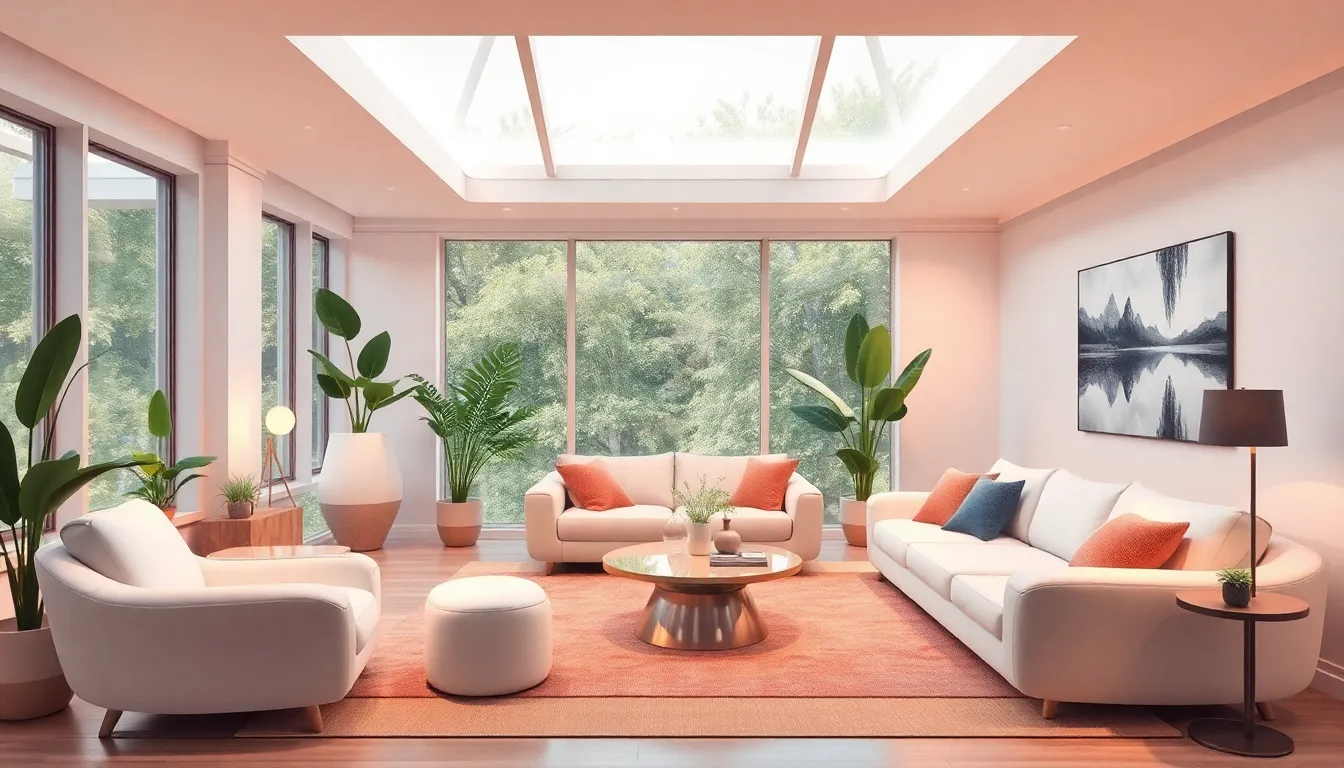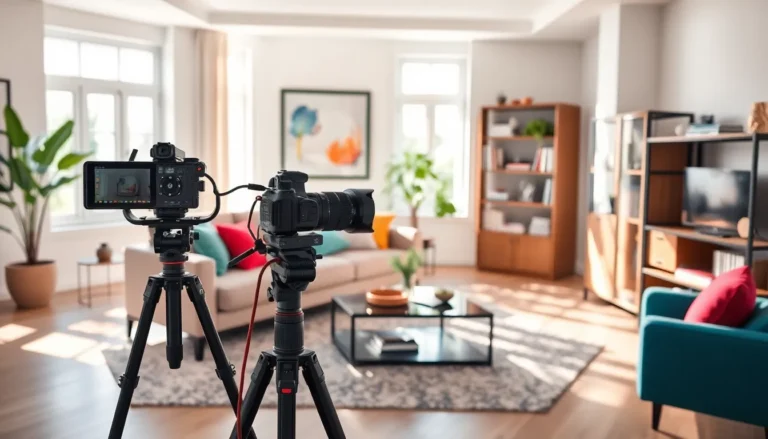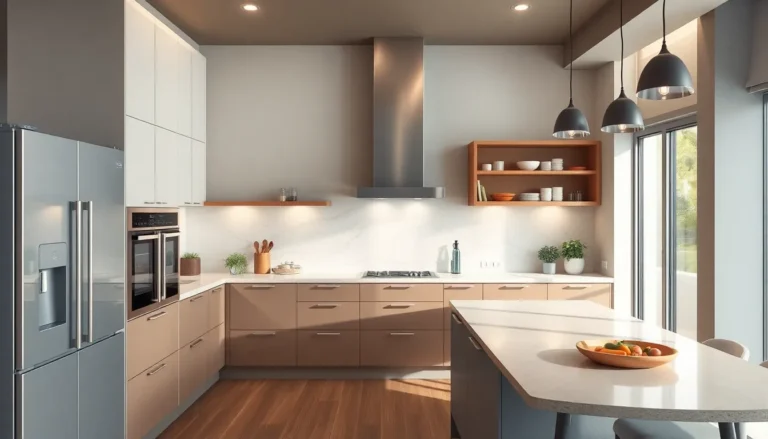Imagine stepping into a room that feels like it’s been plucked straight from a sci-fi movie set. Space interior design isn’t just about aesthetics; it’s about creating an atmosphere that sparks imagination and inspires creativity. With the right elements, a home can transform into a cosmic retreat where every corner invites exploration.
From sleek, futuristic furniture to ambient lighting that mimics the stars, space interior design blends functionality with a touch of whimsy. It’s not just for astronauts or sci-fi enthusiasts; anyone can infuse their living space with a sense of wonder. So why not turn your home into a celestial sanctuary? After all, who wouldn’t want to kick back in a room that feels like a launchpad to the stars? Get ready to elevate your space—literally and figuratively.
Table of Contents
ToggleUnderstanding Space Interior Design
Space interior design immerses individuals in imaginative environments. This approach emphasizes creative elements that transform ordinary homes into otherworldly retreats.
Importance of Space in Interior Design
Space plays a critical role in shaping the ambiance of a home. It influences how light, movement, and functionality interact. Efficient use of space enhances openness, encouraging relaxation and exploration. Proper organization ensures each area serves its purpose while maintaining aesthetic appeal. Notably, thoughtful spatial arrangements can make even small areas feel expansive. Therefore, prioritizing space in design choices elevates the overall experience of living environments.
Key Principles of Space Interior Design
Several key principles guide space interior design. First, balance creates harmony between furniture and decor, preventing overcrowding. Second, scale and proportion ensure that each piece complements the surrounding elements. Third, color palette selection impacts mood, with lighter hues amplifying space perception. Additionally, texture adds depth, inviting tactile interaction. Lastly, lighting serves both practical and decorative roles, accentuating features and enhancing atmosphere. Adherence to these principles fosters captivating and enjoyable living spaces.
Color Schemes and Their Impact
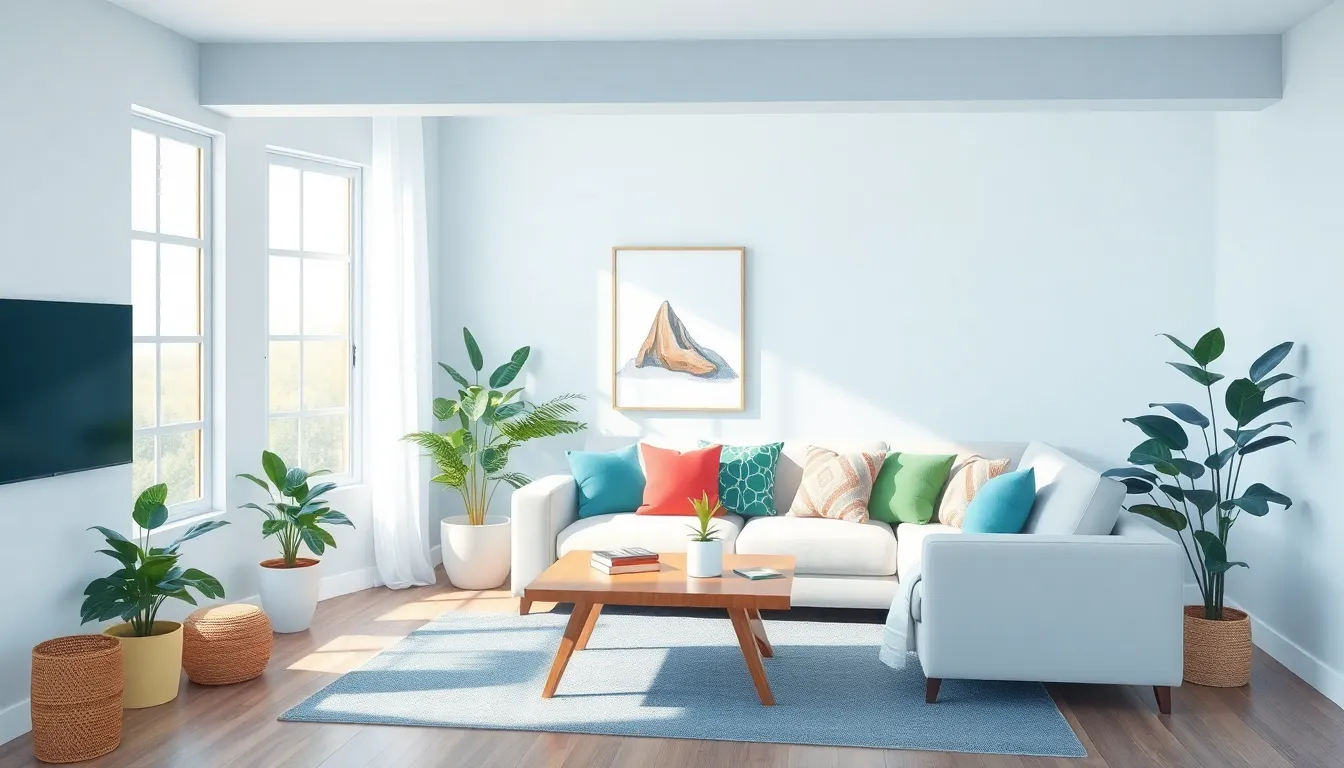
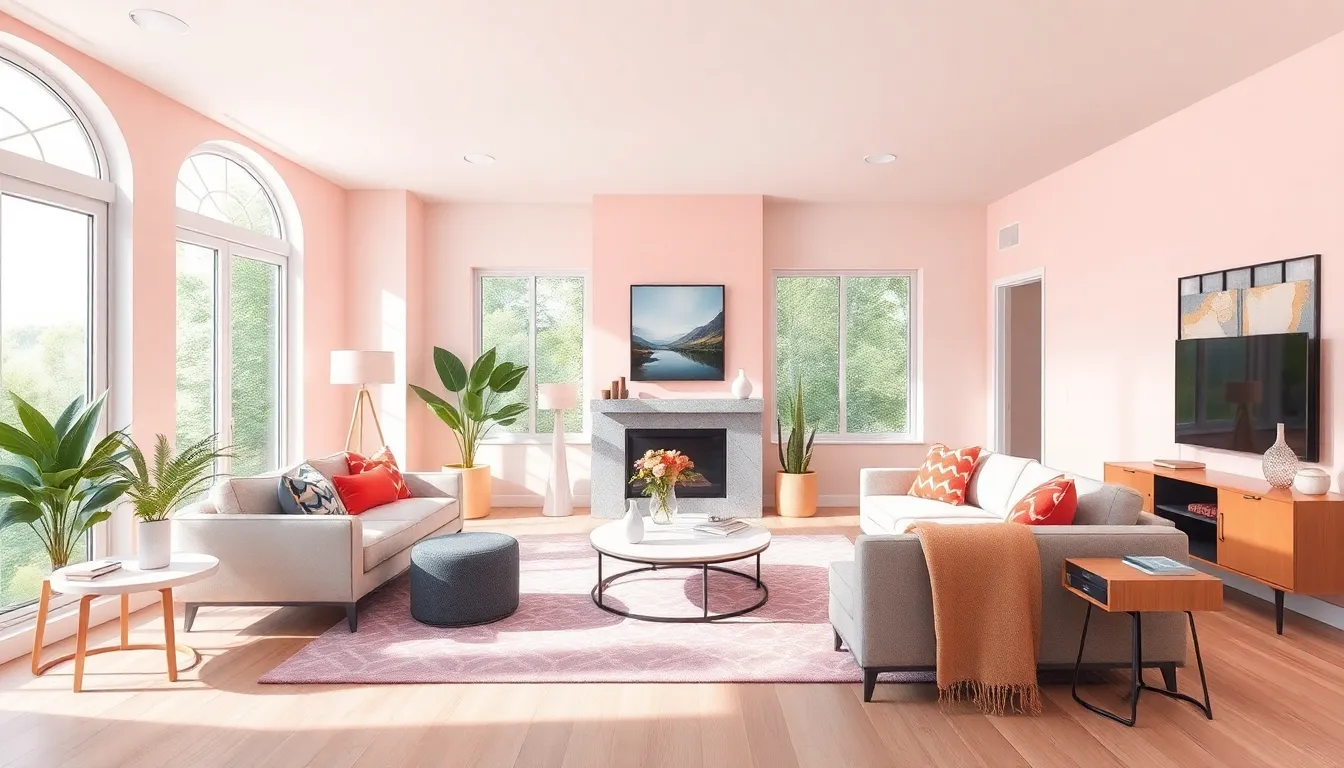
Color choice significantly influences the ambiance and perception of space. Thoughtful color schemes create environments that feel inviting and comfortable.
Choosing the Right Palette
Selecting the appropriate palette involves blending colors that harmonize with the desired mood. Soft pastels instill calmness while bold colors energize a space. Neutral tones provide versatility, allowing for easy accenting with vibrant accessories. Designers often emphasize the importance of consistency in color application across different areas, ensuring the overall look remains cohesive.
Color Psychology in Space Design
Understanding color psychology is essential in space interior design. Colors evoke emotions that shape experiences within a space. Blue hues promote tranquility, encouraging relaxation. Warm tones like reds and oranges stimulate creativity and energy. Green symbolizes growth and rejuvenation, connecting occupants with nature. Designers leverage these psychological effects to create intentional atmospheres that enhance well-being and harmony throughout living spaces.
Furniture Arrangement Techniques
Effective furniture arrangement enhances both aesthetics and functionality in a space. Techniques exist to optimize layout and improve usability throughout the home.
Maximizing Space Efficiency
Use multifunctional furniture to make the most of available square footage. Items like ottomans with storage or sleeper sofas enable versatile use. Arrange seating to encourage conversation while allowing for fluid movement. Prioritize walkways by keeping pathways clear, aiming for at least 24 inches in width. Place large pieces against the wall to open up central areas. Incorporating vertical storage solutions also creates additional room for essential items.
Creating Flow and Functionality
Establishing a natural flow improves overall functionality in a design. Start by clustering furniture to promote interaction in gathering spaces. Use area rugs to visually define zones within an open plan. Ensure that transitions between spaces remain seamless by avoiding overcrowding. Direct sightlines towards focal points, such as artwork or windows, which draws the eye. Create balance with symmetrical arrangements, but don’t shy away from unique piece placements to spark interest.
Lighting Considerations
Lighting plays a pivotal role in space interior design, shaping mood and functionality within a room. Effective lighting techniques combine natural and artificial sources to create an inviting atmosphere.
Natural vs. Artificial Lighting
Natural light enhances the perception of space and adds warmth to interiors. Using large windows or skylights maximizes sunlight exposure, improving well-being. Alternatively, artificial lighting supplements natural sources during darker hours. Incorporating LED fixtures not only provides energy efficiency but also offers versatility in light quality. Both lighting types should harmonize to ensure a balanced environment. Designers focus on the time of day and seasonal changes when planning layouts, adjusting elements to maintain effective light throughout the year.
Layering Light for Effect
Layering light involves combining different types of lighting to achieve depth and atmosphere. Ambient lighting provides overall illumination, while task lighting focuses on specific areas for activities. Accent lighting draws attention to decorative elements, enhancing visual interest. Strategic placement enhances textures and colors within the space. Designers recommend dimmable fixtures to adjust intensity according to mood and function. Utilizing a mix of these lighting layers creates a dynamic feel, encouraging versatility and comfort throughout various living spaces.
Incorporating Personal Style
Incorporating personal style into space interior design adds uniqueness and character to living environments.
Blending Functionality with Aesthetics
Functionality plays a crucial role alongside aesthetics in space interior design. Designers emphasize selecting furniture that serves multiple purposes, ensuring each piece contributes to usability. For example, a coffee table may also function as a storage unit, maximizing space efficiency. Choosing decor that reflects individual taste enhances the overall ambiance. Artistic elements, such as wall art and accent pieces, showcase personal interests while harmonizing with the room’s design. Balancing these aspects creates a cohesive atmosphere that resonates with one’s identity.
Trends in Space Interior Design
Current trends in space interior design embrace sustainability and innovation. Minimalist approaches dominate, emphasizing clean lines and uncluttered spaces. Natural materials, such as wood and stone, gain popularity for their warm textures and eco-friendly appeal. Additionally, smart technology integration into design improves functionality without compromising aesthetics. Ambient lighting systems, for instance, adapt to mood and activity, enhancing the experience within the space. Incorporating biophilic design elements, like indoor plants, connects interiors with nature, promoting well-being. Staying informed about these trends fosters a modern, inviting environment tailored to personal style.

